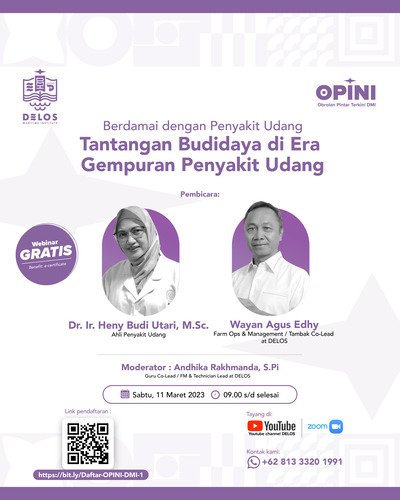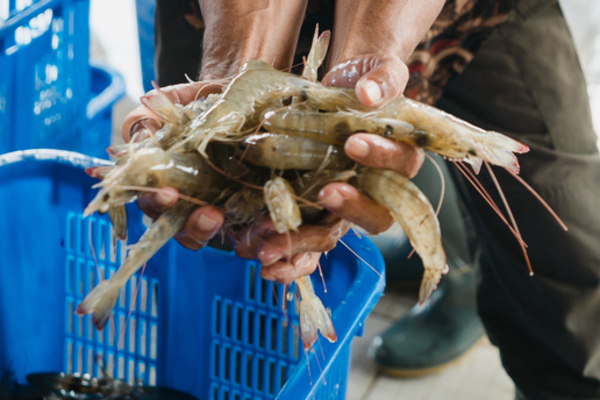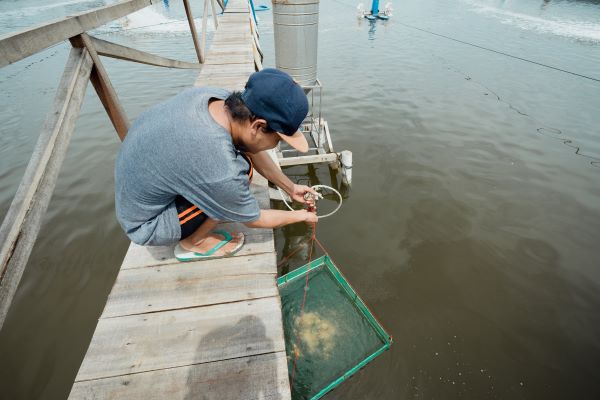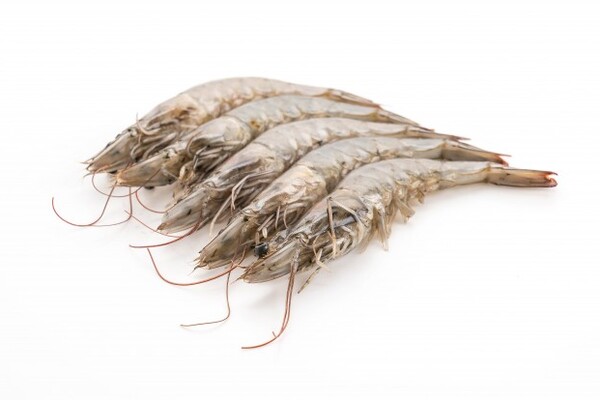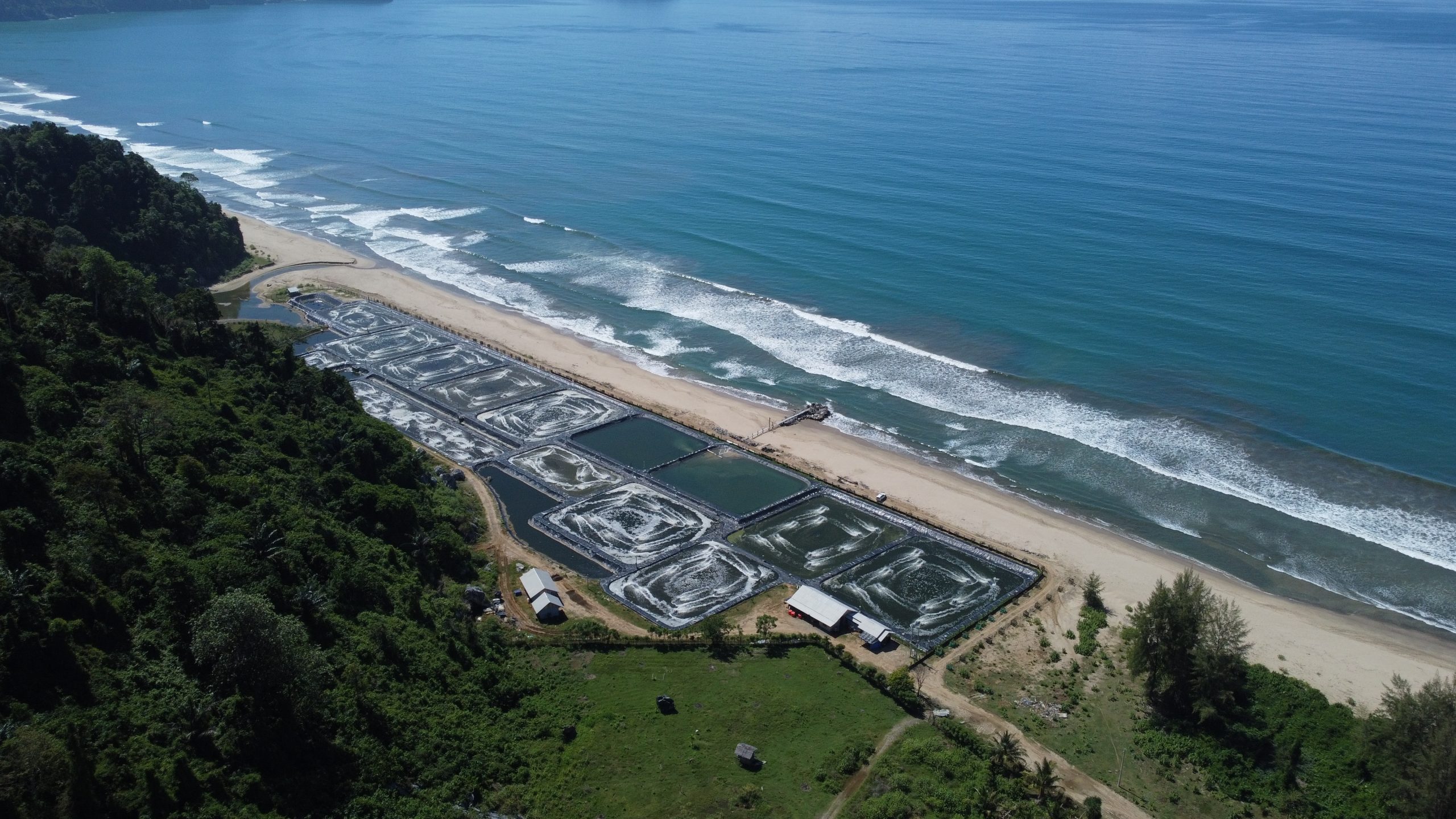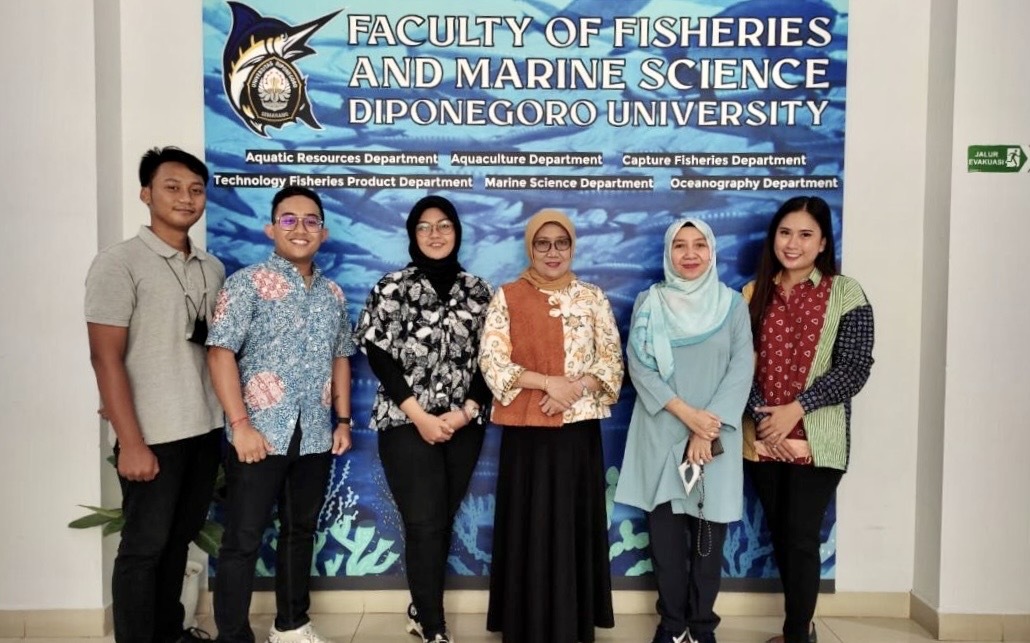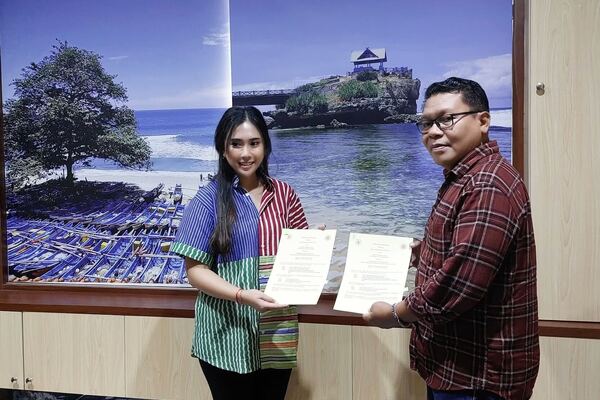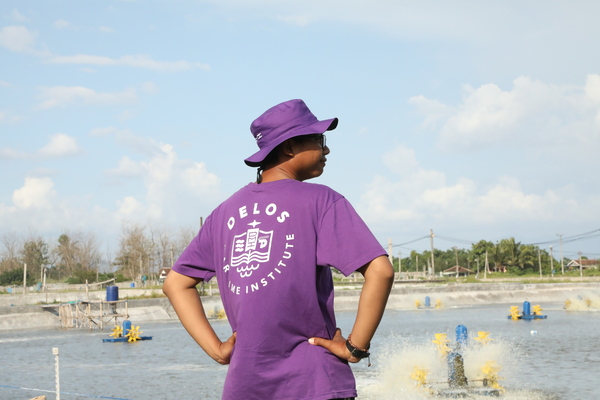DELOS Maritime Institute Will Host Free Webinar About Shrimp Diseases

Vannamei shrimp farming is a lucrative business and has been occupied by many lately. However, it has challenges. One of the obstacles faced when carrying out vannamei shrimp farming is shrimp disease attacks.
Disease attacks can cause significant production losses and, in some cases, mass mortality of the shrimp in the culture. Of course, this is a frightening specter for all shooters.
To help farmers to overcome this problem, the DELOS Maritime Institute is holding a webinar entitled OPINI DMI, or DELOS Maritime Institute’s Latest Smart Chat, with the theme “Cultivation Challenges in the Era of Shrimp Disease Attacks,” which will be held on Saturday, March 11, 2023.
In the OPINI DMI Webinar, we will join with leading experts in vannamei shrimp farming, especially on shrimp diseases, who will provide valuable insights on how to prevent and deal with disease attacks during cultivation.
Also Read: DELOS Maritime Institute Graduated 12 Participants Who are Ready to Enter the World of Work
Benefits of Joining the OPINI DMI Webinar
The speakers who will fill in this webinar are Dr. Ir. Heny Budi Utari, M.Sc. and Wayan Agus Edhy. The two speakers will present various topics, including the latest research on shrimp diseases, best practices for disease prevention, and innovative solutions.
The speakers also have years of experience working with shrimp farmers and have helped businesses overcome challenges associated with shrimp diseases. By attending this webinar, you can discuss and ask questions directly.
Another benefit of participating in this webinar is connecting with other shrimp farmers. Shrimp farming can be a single business, and finding someone who understands your challenges can be difficult. Attending these webinars allows you to connect with people who share your interests and passions.
How to Register for Webinars
The OPINI DMI webinar will be held free of charge via Zoom meeting and YouTube DELOS. However, to become a participant, you need to fulfill the following requirements:
- Share OPINI DMI webinar posters to Instagram stories or group chats with a minimum of 5 members.
- Follow our Instagram account @delos.institute
- Upload the first and second proof of requirements to the registration link.
- Fill in the registration form at https://bit.ly/Daftar-OPINI-DMI-1
- Join our group at https://t.me/DelosInstitute (telegram) and https://bit.ly/GrupOpiniDMI (WhatsApp)
Also Read: DELOS Launches Inspirational Podcast on Aquaculture, DELOS Talks
Immediately Register Yourself in the OPINI DMI Webinar
The OPINI DMI webinar can be considered a mandatory event for anyone who has a high interest in shrimp farming. Good for students, farmers, and ordinary people who are just getting to know the world of aquaculture.
Through this webinar, you will gain a lot of new knowledge and connections and the opportunity to have direct discussions with professionals who are experts in the field of shrimp diseases.
So please mark your calendars for Saturday, March 11, 2023, and join us for this informative and inspiring event. Register yourself now at https://bit.ly/Daftar-OPINI-DMI-1!
